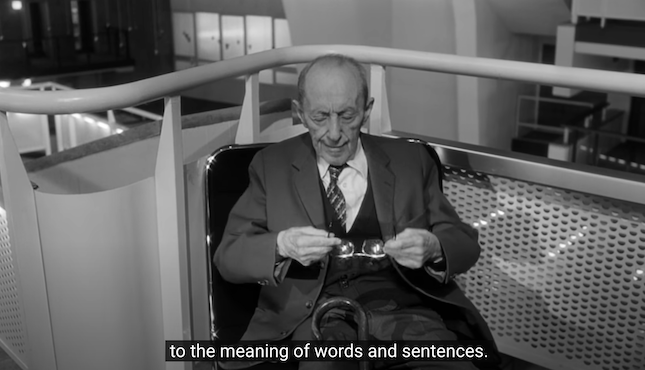The Reader-Centric Approach to Editing Your Novel

Editing your novel isn’t about being good, or a grammar whiz, or even correct. Your best editing mindset is to edit for your reader.
You’ve poured your heart into your manuscript, dedicating countless hours to crafting intricate plots and fleshing out characters that feel almost as real to you as your closest friends. Now, as you face the daunting task of editing, it’s easy to fall into the trap of believing that this stage is solely about dotting your i’s, crossing your t’s, and ensuring your prose is as polished as a mirror.
If you pause and shift your perspective, you’ll realize that editing your novel isn’t just about being good with grammar, or a whiz at weaving sophisticated sentences, nor is it merely about correctness in the conventional sense. The essence, the true art of editing, is about stepping into the shoes of your future readers.
As you edit, you are not just the author, but also the first reader of your work. This mindset transition is crucial. Editing for your reader means refining your story to not just be understood, but to be felt; to not just be followed, but to be experienced deeply and memorably. It’s about ensuring that each page turned is a step further into the world you’ve created, making your readers reluctant to leave even after the last word.
Your best editing mindset is not anchored in showcasing your command of language or adherence to writing norms, but in your ability to edit with your reader at the forefront of your mind. Let’s explore how to make your novel not just a book they read, but an experience they live and cherish.
The Reader-Centric Editing Approach
A reader-centric mindset means adopting a unique vantage point: you’re not just an author scrutinizing text for technical accuracy; you’re a meticulous tailor, ensuring every thread of your narrative suits the reader’s comfort and style. Editing for the reader involves fine-tuning your manuscript to elevate readability, foster engagement, and maximize overall enjoyment for your intended audience.
Editing for the reader is a dynamic process of adjustment and refinement, where you mold your prose, pacing, and structure not solely based on the rules of grammar, but according to the anticipated needs and expectations of your readers.
This approach demands a deeper engagement with your manuscript than simply hunting down misplaced commas or correcting split infinitives. It asks you to consider how your words, scenes, and chapters resonate with an audience.
Are complex ideas presented with clarity?
Do your plot’s ebbs and flows align with the pace at which your audience would be most engaged?
Does each character’s dialogue sound authentic to the reader, enhancing their connection to the story?
Prioritizing these questions, you direct your editing efforts toward creating a seamless, immersive experience that captures and retains your reader’s interest from the first page to the last.
Adopting a reader-centric editing philosophy provides a more holistic benefit than a focus limited to grammatical precision and stylistic flair. While a technically correct manuscript is undeniably important, it can fall flat if it doesn’t resonate with its audience.
A novel teeming with beautiful prose and sophisticated metaphors might impress for its craftsmanship, but if those elements obstruct comprehension or distract from the story arc, they can disengage readers. Conversely, a manuscript thoughtfully edited with the reader in mind might occasionally bend the rules of grammar or play with unconventional structures, yet deliver a far more compelling and satisfying read.
While the adherence to linguistic correctness forms the scaffolding of good writing, editing with the reader’s experience as your compass allows you to infuse your story with the depth and vitality that elevates it from good to unforgettable. This approach fosters a deeper connection between your words and your audience, building bridges where barriers might otherwise stand. It ensures that your story is not merely observed from a distance but lived, felt, and cherished by those who wander through its pages.
The Three Pillars of Reader-Centric Editing
Adopting a reader-centric editing approach revolves around three core elements: Clarity and Comprehension, Engagement and Pacing, and Emotional Resonance and Relatability. Mastering these pillars ensures that your manuscript not only entertains but also connects and resonates with your readers on a deeper level.
1. Clarity and Comprehension
Ensuring that your narrative is easily understandable and that your plots are coherent is foundational. Here, the goal is to convey your story’s essence without overwhelming or confusing your readers.
– Techniques for Clarity: Simplify complex sentences, utilize active voice, and weave any necessary exposition into the narrative organically, avoiding information dumps. Tools like readability scores can help gauge the accessibility of your text.
– Avoiding Clarity Pitfalls: Common issues include overly complex vocabulary, lengthy sentences filled with numerous clauses, and jumping between points in time or perspective without clear transitions. To avoid these, periodically step back and read your work as if you were encountering it for the first time, or consider beta readers and editors to provide fresh perspectives.
2. Engagement and Pacing
Balancing the rhythm of your story is crucial for maintaining reader interest. A well-paced narrative keeps readers hooked through a mix of action, dialogue, and descriptive passages.
– Strategies for Pacing: Evaluate your story’s flow by looking at the structure of individual scenes and the narrative arc as a whole. Break up longer, slower sections with moments of action or dialogue and ensure that your chapters end with something that entices the reader to continue.
– Trimming to Maintain Engagement: Be vigilant in identifying sections that may bore or confuse readers, such as unnecessary subplots, superfluous descriptions, or characters that don’t advance the narrative. Use feedback from beta readers as a litmus test for what might need cutting or reworking.
3. Emotional Resonance and Relatability
Creating characters and scenes that evoke emotion and to which readers can relate is perhaps the most potent way to ensure your story is memorable.
– Enhance Emotional Impact: Focus on showing rather than telling emotions. Use strong, vivid descriptions and internal monologues to reveal characters’ feelings and motivations. Craft key scenes carefully to build up to emotional moments, using sensory details to heighten the experience.
– Improving Relatability: Characters should have flaws as well as strengths, making decisions that align with their development and the story’s trajectory. Encourage reader investment by giving characters clear goals, obstacles, and stakes. Feedback from readers can be incredibly useful in refining this element, offering insights on characters’ believability and the authenticity of their emotional journeys.
Focus on these three pillars to refine your manuscript into a story that not only entertains but also deeply connects with your audience, ensuring a reading experience that is as rewarding as it is memorable.
Practical Steps to Implement a Reader-Centric Editing Approach
Adopting a reader-centric approach during the editing phase of your manuscript impacts its reception and success. By keeping the reader’s experience at the forefront, you refine your narrative into a more engaging and gratifying story. Here’s a systematic approach to revising your manuscript with your reader in mind:
1. First Reads: Looking at The Big Picture Through the Lens of the Target Audience
The initial step in a reader-centric editing process is to re-read your manuscript as if you were a member of your target audience. This means setting aside your writer’s hat and adopting a reader’s mindset. Ask yourself:
Does the story flow logically?
Are the stakes clear?
Is the world-building sufficient but not overwhelming?
This big-picture view helps identify major areas that need reworking, such as pacing issues, character development gaps, and plot inconsistencies, ensuring they align with audience expectations.
2. Feedback Loops: Incorporating Beta Reader Insights and Constructive Criticism
One of the most valuable resources in your editing arsenal is feedback from beta readers. Choose beta readers who are representative of your target audience or who can provide diverse perspectives on your work. Encourage honest, constructive criticism, focusing on their experience of reading your story.
What confused them?
What did they love?
Use this feedback as a guide to refine problematic elements, enhance strengths, and better align the narrative with reader expectations.
3. Scene-by-Scene Evaluations: Fine-Tuning Scenes for Maximum Impact and Readability
After addressing the broader narrative issues, dive deeper into a scene-by-scene evaluation of your manuscript. Examine each scene’s purpose, impact, and engagement level from a reader’s perspective.
Do scenes transition smoothly?
Does each scene advance the plot or character development in a meaningful way?
This detailed scrutiny allows you to trim unnecessary content, enrich scenes lacking in emotional depth or relevance, and adjust pacing for optimal engagement.
4. The Final Polish: Ensure the Manuscript Is Not Only Error-Free but Also Shines in Terms of Storytelling and Reader Engagement
The last step focuses on polishing your manuscript to perfection. While ensuring grammatical accuracy and stylistic consistency is crucial, the final polish also involves elevating the quality of your storytelling. This means sharpening dialogues, enhancing descriptions for richer imagery, and ensuring your narrative voice is consistent and compelling throughout.
At this stage, every edit should contribute to a reader’s understanding, enjoyment, and emotional investment in your story.
Following these practical steps, you fine-tune your manuscript in a way that prioritizes the reader’s experience. Through first reads, feedback loops, detailed evaluations, and a comprehensive final polish, your manuscript can transform into a story that not just resonates with your audience but also leaves a lasting impression on their hearts and minds.
The Challenges of Reader-Centric Editing
Shifting your editing focus to the reader’s experience enhances the appeal and impact of your manuscript. This approach comes with its own set of challenges and pitfalls, including the risks of over-editing, diluting your unique voice, and the struggle to balance your personal vision with reader expectations. Understanding these challenges is the first step toward navigating them effectively.
Over-Editing
One of the primary risks of any editing process, especially when trying to cater to potential readers, is over-editing. In the pursuit of perfection, you might find yourself in a loop of continuous revisions, each time shaving off a bit more of your manuscript’s originality and dynamism.
Strategies for Avoidance:
– Set clear editing goals and limits for each revision cycle.
– Use feedback from beta readers as a benchmark for when to stop; if your revisions address their main concerns, it may be time to resist further changes.
– Trust your instincts. If you feel further edits might compromise the core of your story, it’s probably time to step back.
Losing Your Unique Voice
In trying to appeal to a broad audience, there’s a risk of homogenizing your narrative to the point where it loses its unique voice. This voice, your authorial signature, is what sets your story apart and makes it memorable.
Strategies for Preservation:
– Regularly remind yourself of the aspects of your writing that are uniquely yours—be it your narrative style, character voice, or thematic focuses. Ensure these remain untouched through the editing process.
– Balance feedback with intuition. Not all advice needs to be acted upon if it dilutes your voice.
– Experiment with small focus groups to see if your unique voice still resonates when incorporating changes based on reader feedback.
Balance Personal Vision with Reader Expectations
Perhaps the most complex challenge in reader-centric editing is aligning your personal vision with reader expectations. While you aim to enhance the reader’s experience, diverging too much from your vision can render the story unrecognizable to you, its creator.
Strategies for Balance:
– Identify the non-negotiables in your manuscript—those elements central to your artistic intent—and ensure these remain inviolable throughout the editing process.
– For every change you consider, ask whether it enhances your story’s delivery or merely panders to perceived audience preferences.
– Openly discuss with beta readers and even your editor about where you’re willing to compromise and where your vision is steadfast. This clarity can guide more actionable and focused feedback.
Address these challenges head-on with strategic approaches. You’ll maintain the integrity of your artistic intent while still opening your manuscript to the broadening influence of reader-centric editing. This balanced approach not only refines your narrative but also preserves its essence, ensuring that the story remains undeniably yours—resonant and impactful to your readers.
Editing Through the Reader’s Eyes
Editing with a reader-centric mindset isn’t just a strategy—it’s a transformative journey for both your manuscript and your relationship with your future readers. By adopting this approach, you’re choosing to step beyond the confines of personal satisfaction in storytelling, venturing into a realm where your narrative becomes a shared experience, a dialog between you and those who immerse themselves in the world you’ve created.
This mindset emphasizes not only enhancing your manuscript but also the deepening of connections with your audience. It’s about crafting your story with an awareness of its reception, ensuring that every plot twist, character development, and thematic exploration resonates with and is accessible to your readers. This approach doesn’t dilute your artistic vision; rather, it amplifies its impact, making your story not just something you tell, but something you share.
As you refine your work with the reader in mind, remember that editing is not just a phase in the writing process but an act of empathy and consideration for the reader’s journey through your story. It’s a powerful reminder that at the heart of every memorable story is not just a great writer, but a thoughtful editor, one who views every word and sentence through the eyes of those who will ultimately give the story life by reading it.
Your story is a gift to the world; polish it not just with your intellect and creativity, but with your heart, ensuring that when it finally reaches its audience, it does so with the power to captivate, connect, and, ultimately, transform.
Are you ready to embark on the journey of bringing your mystery novel to life? Join me in the Write A Killer Mystery: 12-Session Coaching Program. Transform your idea into a captivating mystery that keeps readers hooked from the first page to the last.
With personalized 1:1 sessions, you’ll receive expert guidance through every critical phase of your writing process, from crafting your mystery framework to preparing for publication. Whether you’re an aspiring author or looking to polish your manuscript, this coaching program is tailored to help you achieve the success and recognition your story deserves. Don’t let your story remain untold. Start your journey to becoming a published mystery author with raving fans and stellar reviews. Enroll now!
Photo by Perfecto Capucine:




